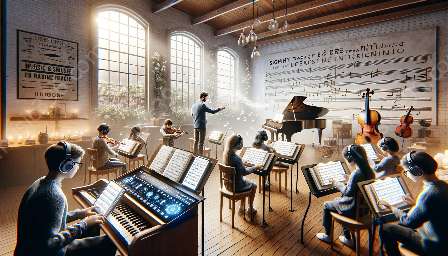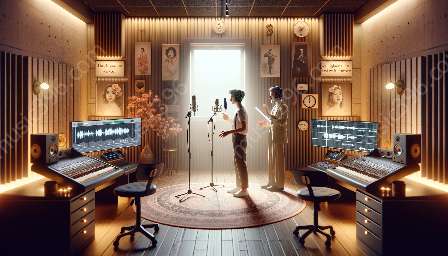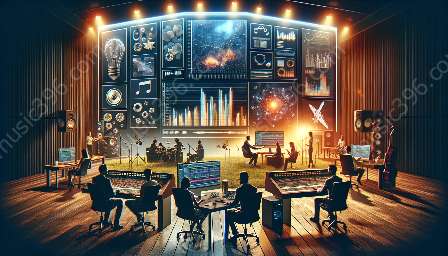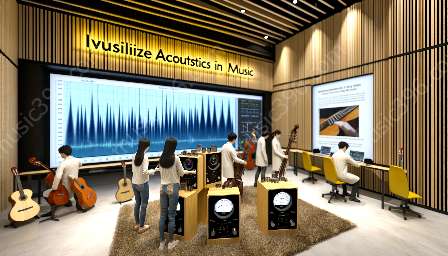Understanding how to improve sight reading proficiency is a crucial aspect of musical education. Sight reading and ear training are fundamental skills that contribute to a musician's ability to perform and understand music. This article explores a range of effective exercises and strategies aimed at enhancing sight reading proficiency within the context of music education.
The Importance of Sight Reading and Ear Training
Sight reading, the ability to read and perform music simultaneously, and ear training, the development of the ability to recognize pitches, intervals, and rhythms by ear, are essential components of music education. These skills enable musicians to quickly interpret and perform music, fostering a deeper understanding of musical composition and structure.
Benefits of Improving Sight Reading Proficiency
Enhancing sight reading proficiency offers numerous benefits for musicians. It allows for greater flexibility in performance, the ability to discover and explore new musical repertoire, and the capacity to play with other musicians confidently. Additionally, improved sight reading proficiency contributes to a better overall understanding of music theory and composition, enhancing a musician's creativity and musical expression.
Effective Exercises for Enhancing Sight Reading Proficiency
Developing effective exercises tailored to improving sight reading proficiency is essential for music educators and musicians alike. Below are some comprehensive exercises and strategies to enhance these vital skills:
1. Sight Reading Practice
- Engage in regular sight reading practice sessions, focusing on a variety of musical genres and styles. Incorporate specific exercises that involve reading music at different tempos and dynamics, using both familiar and unfamiliar musical pieces.
2. Ear Training Exercises
- Include ear training exercises to enhance pitch and rhythm recognition. This can involve interval recognition, rhythmic dictation, and pitch matching exercises, designed to sharpen auditory skills and promote accurate musical interpretation.
3. Sight Reading Challenges
- Introduce sight reading challenges that encourage musicians to tackle complex musical passages and unfamiliar notation. This can include sight reading competitions, ensemble sight reading exercises, and collaborative sight reading sessions.
4. Rhythmic Training
- Place emphasis on rhythmic training exercises, focusing on time signature awareness, beat subdivision, and rhythmic accuracy. Musicians can practice clapping or performing rhythms using percussion instruments to develop a strong sense of rhythmic precision.
5. Interval Recognition
- Implement exercises aimed at improving interval recognition, such as playing and singing scales, arpeggios, and melodic intervals. This aids in developing a keen sense of pitch and interval relationships, facilitating more accurate sight reading and musical interpretation.
6. Sight Singing Practice
- Encourage sight singing practice, allowing musicians to improve their ability to read and sing music simultaneously. This exercise enhances both sight reading and ear training skills, fostering a holistic approach to musical performance.
Integration of Technology
With the advent of technology, the integration of digital tools and resources can further enhance sight reading and ear training. Utilize interactive apps, software, and online platforms that offer sight reading exercises, ear training games, and virtual rehearsal spaces. By leveraging these technological resources, musicians can engage in immersive and dynamic practice sessions, tailored to their specific needs and skill levels.
Collaborative Learning and Peer Feedback
Promote collaborative learning environments that encourage peer feedback and constructive criticism. Engaging in ensemble sight reading sessions, group ear training exercises, and musical discussions with peers can provide valuable insights and diverse perspectives, contributing to holistic skill development and musical growth.
Measuring Progress and Tracking Improvement
Establish methods for measuring progress and tracking improvement in sight reading proficiency. Utilize assessment tools, such as sight reading evaluations, ear training quizzes, and performance reviews, to gauge the development of these essential skills. By identifying areas of strength and areas for improvement, musicians can tailor their practice routines and exercises to address specific challenges effectively.
Conclusion
Improving sight reading proficiency through targeted exercises and strategies is a valuable pursuit within the realm of music education. By prioritizing sight reading and ear training, musicians can enhance their musical abilities, broaden their repertoire, and cultivate a deeper understanding of musical expression. Through consistent practice, the integration of technological resources, and the fostering of collaborative learning environments, musicians can elevate their sight reading proficiency and contribute to a richer, more nuanced musical landscape.















